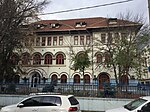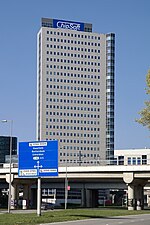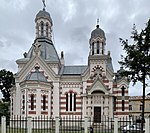St. Bessarion Church
Churches completed in 1797Churches completed in 1913Commons category link is locally definedHistoric monuments in BucharestRomanian Orthodox churches in Bucharest
St. Bessarion Church (Romanian: Biserica Sfântul Visarion) is the name given to two Romanian Orthodox churches located at 14 Visarion Street in Bucharest, Romania, close to Piața Romană. They are dedicated to Saint Bessarion II of Larissa.
Excerpt from the Wikipedia article St. Bessarion Church (License: CC BY-SA 3.0, Authors).St. Bessarion Church
Strada Visarion, Bucharest Dorobanți (Sector 1)
Geographical coordinates (GPS) Address Website Nearby Places Show on map
Geographical coordinates (GPS)
| Latitude | Longitude |
|---|---|
| N 44.44868 ° | E 26.09548 ° |
Address
Biserica Ortodoxă „Sfântul Visarion Nou"
Strada Visarion 14
010631 Bucharest, Dorobanți (Sector 1)
Romania
Open on Google Maps










